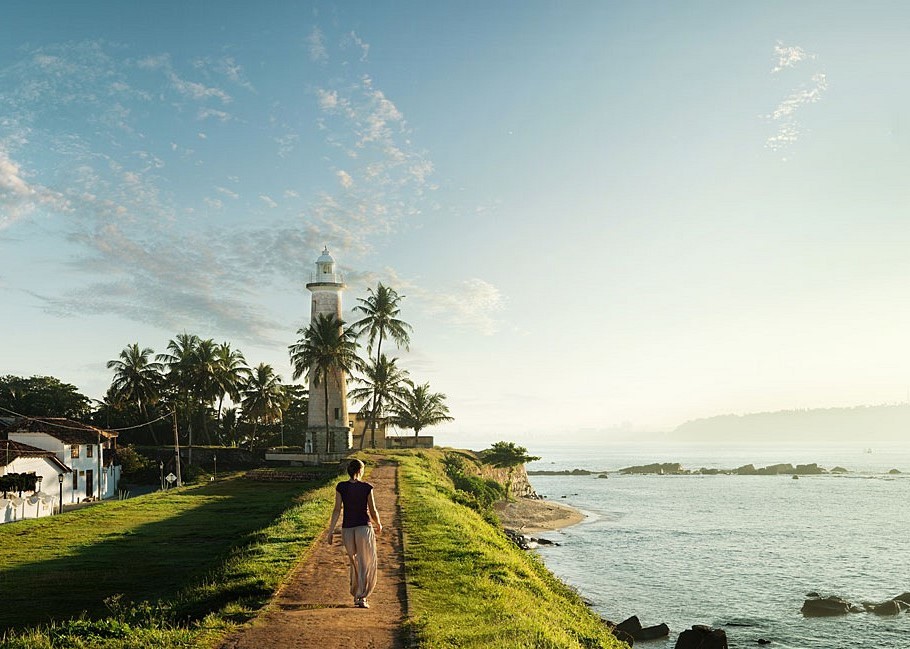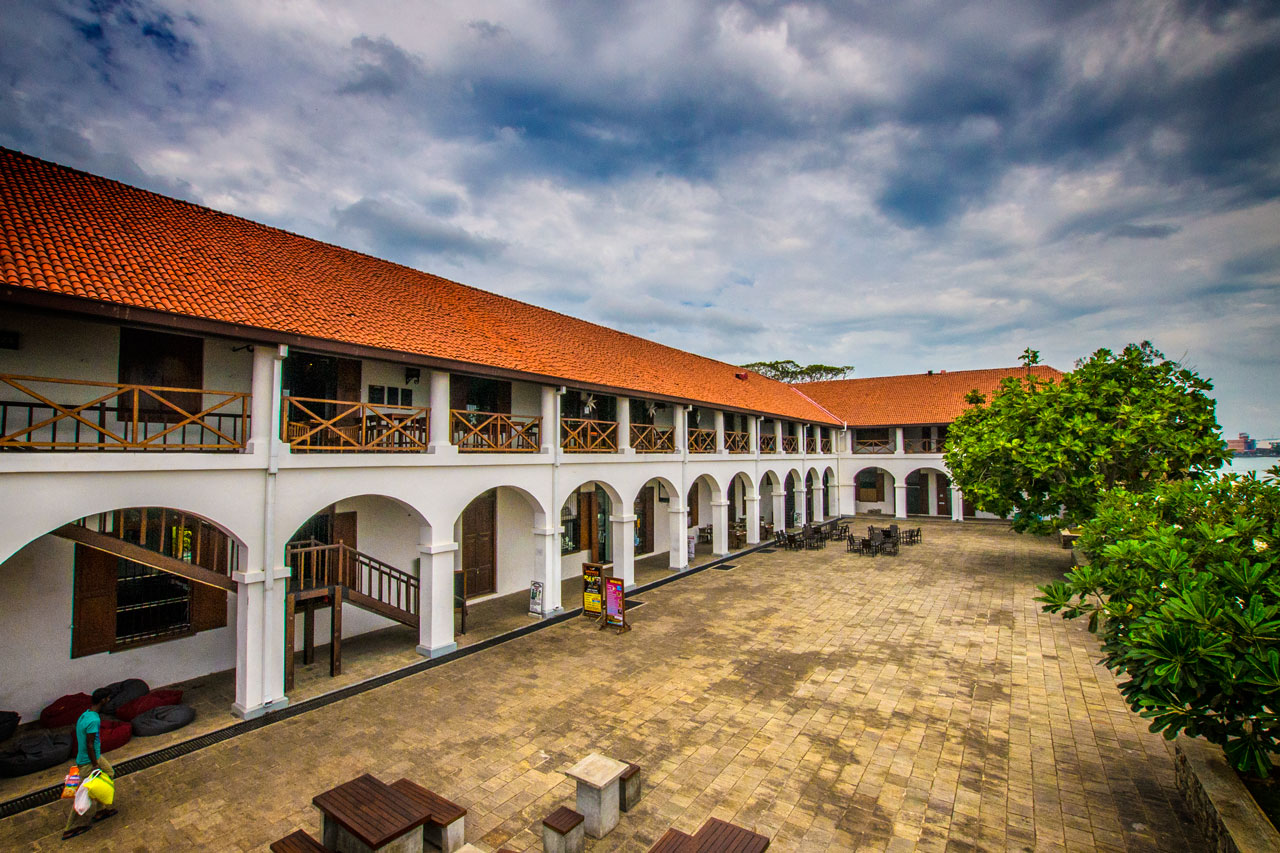GALLE FORT
Galle is a town on southwest shore in Sri Lanka. It is renowned for the fortified ancient town of Galle Fort, established in the 16th century by Portuguese colonists. Stone sea walls, expanded by the Dutch, surround car-free roads with architecture that reflects the rule of Portuguese, Dutch and Britain. Notable structures are the Dutch Reformed Church of the 18th century. Galle Lighthouse is on the southeastern tip of the fort.
The Old Gate, the initial entrance to the fortification, carries the Dutch East India Company insignia. The door leads to the National Maritime Museum, with seafaring and marine life exhibits including a whale skeleton and shipwreck-saved objects. In a 1656 building, the Galle National Museum displays artifacts from southern Sri Lanka such as ritual masks and woodcarvings and colonial-era items. The Galle International Stadium hosts cricket matches with views of the Indian Ocean just outside the northern fortifications.
The fort Galle is a world heritage site and is Asia's biggest surviving fortress constructed by European occupants. While Galle has always been a major trading centre, hence the fortifications, it is also known today for its combination of tourist attractions, including boutiques, restaurants and restaurants, many owned by foreigners, as is a third of the buildings.
ATTRACTIONS IN GALLE

GALLE LIGHTHOUSE
Galle Lighthouse (also known as Pointe de Galle Light) is an onshore lighthouse operated and maintained by the Sri Lankan Ports Authority in Galle, Sri Lanka.
This is the oldest light station in Sri Lanka dating back to 1848, but the initial British-built 24.5-meter (80 ft) lighthouse was about 100 meters (330 ft) from the present site; however, it was demolished by fire in 1934. The current lighthouse of 26.5 meters (87 ft) was built here in 1939. The initial light was provided with a glass prism lens floating in a mercury tub (to decrease friction) and was powered by a weight driven machine.

NATIONAL MUSEUM OF FORT
The National Museum of Galle is one of national museums in Sri Lanka. It is located in the oldest remaining Dutch building in the Galle fort, Galle, a single-story colonnaded Dutch building built in 1656 as the commissariat store for the Dutch garrison at the fort. It subsequently served as a billiard room for the adjacent New Oriental Hotel (now the Amangalla Hotel). The building was restored by the National Museums Department and opened on March 31, 1986.

DUTCH REFORMED CHURCH
The current building originally constructed in 1640, the present building dates from 1752. Its floor is paved with gravestones from Dutch cemeteries, while other remarkable characteristics include the organ and an imposing pulpit made of calamander wood, with a large hexagonal canopy topping it. You may find the friendly attendant who will probably point out the (slightly bizarre) sculpted wooden monument devoted to Abraham Samlant, a former commander of Galle–the small cotton shirt is said to be the one in which he was baptized.

OLD GATE
On the outer side, a beautifully sculpted British arms coat tops the entrance to the Old Gate. Inside, the letters VOC, standing for Verenigde Oostindische Compagnie (Dutch East India Company), are etched in the stone with the date 1669, flanked by two lions and with a cockerel topping it, also served as a spice warehouse was a section of fortifications here.

MARINE ARCHEOLOGICAL MUSEUM
This spacious maritime museum occupies a huge old spice warehouse from the late 17th century constructed by the Dutch. Originally part of the primary gateway to the Fort, the structure is still part of its walls. The scene is set by an introductory video presentation and interactive displays illuminate the maritime past of the city, including the many shipwrecks in the surrounding waters of Galle. It includes two levels that snake across the walls of the town.

FLAG ROCK
Flag Rock was once a Portuguese bastion at the southern end of the Fort. Today, catching a sunset is readily the most common location. You may see daredevil local people jumping from the rocks into the water during daylight hours. Many sellers are selling healthy street food like fresh mango from carts with chili powder.

DUTCH HOSPITAL
This large, colonnaded colonial landmark dates back to the 18th century and is now fully restored and home to countless upmarket boutiques and restaurants. Its size was essential as both the trip to Ceylon and tropical life proved very unhealthy to the Dutch, who died from multiple illnesses and tropical heat in droves. The upper balcony offers fantastic opinions of the bay.

MAIN GATE
The Main Gate in the wall’s northern stretch is a relatively latest addition–it was constructed in 1873 by the British to manage the heavier traffic flow into the ancient city. This part of the wall, which was the most intensely fortified because it faced the land, was originally built by the Portuguese with a moat and then substantially enlarged by the Dutch who divided the wall into separate Star, Moon and Sun Bastions in 1667.
